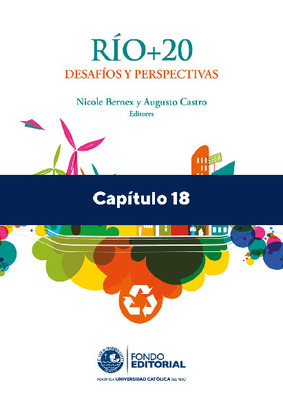| dc.contributor.author | Vida Fernández, José | |
| dc.date.accessioned | 2022-06-23T23:54:44Z | |
| dc.date.available | 2022-06-23T23:54:44Z | |
| dc.date.issued | 2021-11-30 | es_ES |
| dc.identifier.uri | http://revistas.pucp.edu.pe/index.php/derechoadministrativo/article/view/25213/23803 | |
| dc.description.abstract | La tradicional delimitación del entorno digital en sectores de referencia como son las telecomunicaciones (comunicaciones electrónicas), el audiovisual y los servicios de la sociedad de la información (servicios TIC) se ha visto afectada por la aparición de innumerables servicios prestados a través de Internet que ofrecen funcionalidades propias de estos servicios pero que no encajan en su definición, por lo que escapan de la aplicación de su régimen jurídico. Estos servicios over the top (OTT) están alterando el equilibrio de los distintos sectores, al competir con los demás operadores sin someterse a su mismo régimen jurídico, eludiendo obligaciones necesarias para alcanzar objetivos de interés general. Frente a este desafío, la Unión Europea ha optado por ampliar el ámbito de aplicación para incluirlos en el régimen jurídico correspondiente, pero sometiéndolos a unas obligaciones específicas y distintas de las propias de los operadores tradicionales para facilitar su desarrollo a la vez que se garantizan objetivos de interés público. | es_ES |
| dc.description.abstract | The traditional delimitation of the digital environment in reference sectors such as telecommunications (electronic communications), audiovisual and information society services (ICT services) has been affected by the appearance of innumerable services provided through the Internet that They offer features typical of these services but that do not fit into their definition, so they escape the application of their legal regime. These over the top (OTT) services are altering the balance of the different sectors, by competing with other operators without submitting to the same legal regime, avoiding obligations necessary to achieve objectives of general interest. Faced with this challenge, the European Union has chosen to expand the scope of application to include them in the corresponding legal regime, but subjecting them to specific and different obligations from those of traditional operators to facilitate their development while pursuing objectives of public interest. | en_US |
| dc.format | application/pdf | |
| dc.language.iso | spa | |
| dc.publisher | Pontificia Universidad Católica del Perú | es_ES |
| dc.relation.ispartof | urn:issn:2074-0956 | |
| dc.rights | info:eu-repo/semantics/openAccess | es_ES |
| dc.rights.uri | http://creativecommons.org/licenses/by/4.0 | * |
| dc.source | Revista de Derecho Administrativo; Núm. 20 (2021) | es_ES |
| dc.subject | Regulación | es_ES |
| dc.subject | Sector digital | es_ES |
| dc.subject | Servicios de telecomunicaciones | es_ES |
| dc.subject | Servicios audiovisuales | es_ES |
| dc.subject | Servicios de sociedad de la información | es_ES |
| dc.subject | Servicios OTT | es_ES |
| dc.title | La articulación jurídica del entorno digital: insuficiencias y soluciones en la delimitación de los sectores de referencia ante el desafío de los servicios over the top (OIT) | es_ES |
| dc.type | info:eu-repo/semantics/article | |
| dc.type.other | Artículo | |
| dc.subject.ocde | https://purl.org/pe-repo/ocde/ford#5.05.01 | |
| dc.publisher.country | PE | |




